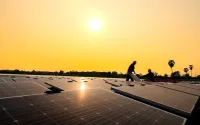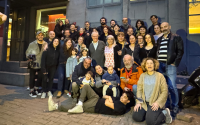31 July 2005 David McNeill
As Japan prepares to commemorate the 60th anniversary of the atomic bombings of Hiroshima and Nagasaki, the dwindling band of survivors say they fear the country's long-standing taboo against developing nuclear weapons is finally ending.
Defence experts say much hinges on the outcome of the current six-party talks in Beijing on defusing the nuclear threat from North Korea, but among older residents in these once devastated cities there is pessimism that as other nations in Asia go nuclear, Japan will follow. They will express these fears over the next few days, when the significance of the anniversary is expected to draw much larger numbers than usual to the annual commemoration ceremonies in Hiroshima and Nagasaki.
"I have never been more afraid about the future than I am now," said Michiko Yamaoka. "I don't trust the politicians in Tokyo to safeguard our anti-nuclear stance. They should all come here and experience what we did." Ms Yamaoka was 15 when the "Little Boy" bomb detonated as she walked from her house into Hiroshima on 6 August 1945, disfiguring her for life. Three days later, Nagasaki was obliterated by the "Fat Man".
That bomb contained 5kg of plutonium. Six decades on, however, Japan has amassed 45 tons of plutonium, and is getting set to open one of the world's largest nuclear reprocessing plants.
"On the 60th anniversary of the bombings, Japan is increasing the nuclear threat by accumulating unnecessary plutonium and opening this plant, which will be the largest producer of plutonium in the world," said Atsuko Nogawa of Greenpeace Japan. "Japan is about to become a country with a nuclear capability on a much bigger scale."
Although Japan tried to build a rudimentary A-bomb during the Second World War, the bitter legacy of Hiroshima and Nagasaki has meant that any talk of developing nuclear weapons has been political suicide for years. Official policy is that Japan will not "manufacture or possess nuclear weapons or allow their introduction into" the country.
But the reality has not always matched the rhetoric. Nuclear-armed US vessels have been allowed to dock in Japanese ports. In the 1970s the then Prime Minister, Eisaku Sato, secretly commissioned a report on the nuclear option, which caused a furore when it was leaked 20 years later.
Politicians have more recently become bolder in challenging the nuclear taboo. A senior opposition figure, Ichiro Ozawa, said in 2002: "We have plenty of plutonium in our nuclear power plants, so it's possible for us to produce 3,000 to 4,000 nuclear warheads." The same year the chief cabinet secretary, Yasuo Fukuda, stunned the nation by claiming Japan's "pacifist" constitution did not prohibit nuclear weapons.
The survivors are also incensed at US plans to develop smaller, "tactical" nuclear weapons, about one-third the size of the Hiroshima bomb. The city's mayor, Tadatoshi Akiba, said in 2004 that Washington was "ignoring the United Nations and international law" and had "turned its back on other nations".
When The Bombs Fell
* Nearly half Hiroshima's 1945 population of 310,000 was killed in the world's first atomic bombing on 6 August 1945. Some 130,000 died almost immediately, with another 10,000 dead by the end of that year. Another 60,000 deaths between 1946 and 1951 were ascribed to the bomb. Altogether, the city counts more than 230,000 as victims.
* Immediately beneath the explosion, equivalent to 15,000 tons of TNT, the wind velocity was nearly 1,000 mph, while the flash generated temperatures of 7,000F.
* Observation of some 3,000 children exposed to the nuclear explosions in the womb showed IQ fell as the radiation dose increased. Among the heavily exposed there was a higher incidence of mental retardation. Average rate of growth and development was also impaired.
* The original target on 9 August 1945 was Kokura, an industrial city. But it was obscured by heavy cloud, and the aircraft was diverted to Nagasaki. Although the plutonium bomb was much more powerful than the uranium fission device dropped on Hiroshima, it caused only half as many casualties - 74,000 died - because of Nagasaki's hilly topography.
* The extra risk of leukaemia, especially among those exposed to radiation as children, was highest during the first 10 years after the bomb, but the heightened risk of other cancers continues today.
* The Nagasaki bomb destroyed what was then the largest Christian cathedral in Asia. Jesuit missionaries in the 16th century made most of their converts there.






